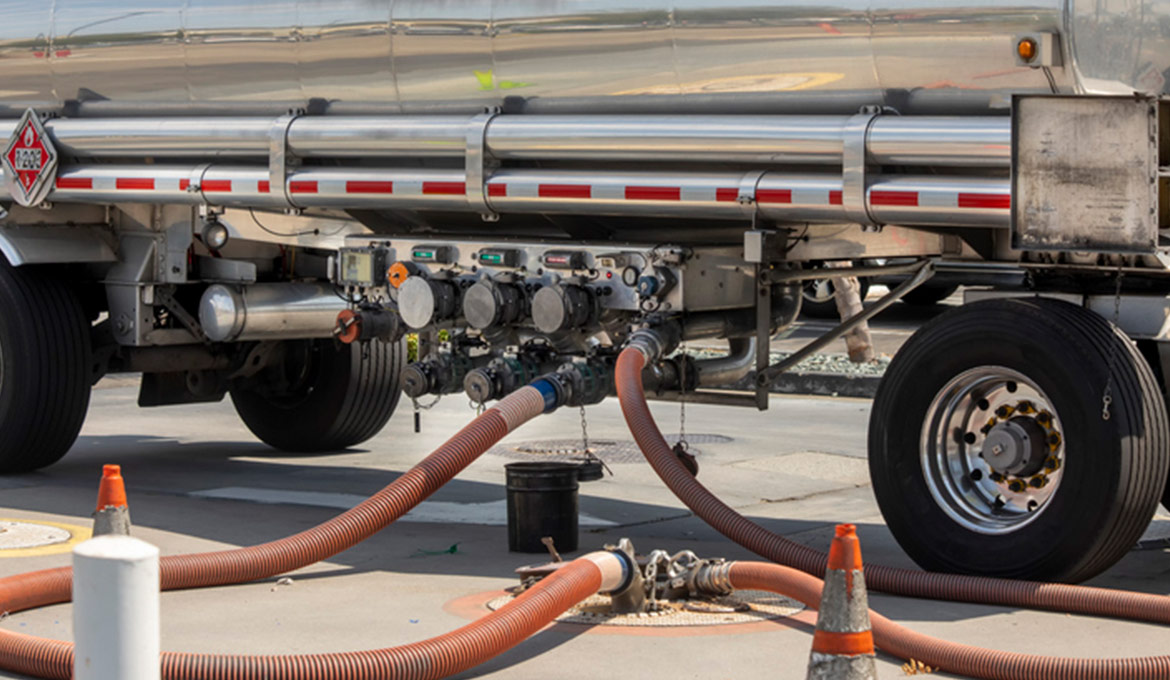
5 Reasons to Automate Your Fuel Delivery
There are more than 120,000 c-store fuel retailers currently operating in the U.S., with the fastest business growth often coming from the largest players. With strong economies of scale and better access to finance, technology and data, bigger operators can use collaboration, nimble pricing strategies and steady headcount to launch and manage sites across larger regions.
Midsized fuel retailers have more limited resources, both in terms of staff and budget, making investment in technology a highly scrutinized decision. But when it comes to growth through innovation, that investment is the key to growth. Smaller businesses that put off technology integration as being too costly or requiring time-consuming onboarding stand to miss out on optimization and growth opportunities.
The truth is that enterprise-level technology and data-driven innovation is not only accessible to smaller operators but is imperative for those fighting to stay competitive in a quickly changing industry. Automation and integrated solutions can reduce the need for extensive manual labor and specialized skills, allowing them to do more with less and focus on strategic growth.
Here are the Top 5 Reasons Integrated Automation is a Must for Midsized Fuel Retailers:
Larger fuel operators may see an annual 1% write-off as an acceptable business expense (despite amounting to millions in lost revenue). Smaller operators don’t have that luxury.
Gambling on gas price fluctuation or placing fuel orders based on educated guesses can pose tremendous risks to smaller operators. Especially given increased competition from big box wholesalers and grocery stores carving out space for fueling stations. The wrong estimate can lead to excess inventory or runouts that cause customers to go elsewhere.
Then there are the labor hours. Manual forecasting calculations can take hours as operators check tank levels, analyze sales history, and prioritize orders.
Using an integrated platform, midsized operators can base allocation decisions on historical consumption data, automated inventory tracking, and fine grain tank chart technology. With multiple streams of data feeding into one central hub, all the information needed is front and center, allowing a fuel operator to:
Managing multiple locations across various geographical areas is a daily challenge for midsized fuel retailers. Add in severe weather patterns and other unexpected emergencies, and the difficulties faced by smaller operators become real very quickly. Accessing and communicating vital information like necessary route changes or hazard warnings can be sketchy, especially in more rural areas.
Even during normal day-to-day operations, processes are slowed down by traditionally manual systems that introduce human error. Smaller businesses also typically have a lower staff headcount, which means when employee hours are needed to execute paper-based processes, other priorities must be sacrificed.
Integrated automation gives midsized operators the same remote visibility as enterprise competitors so they can monitor their properties and react quickly to urgent situations. Real-time data streams fed into one central hub enable operators to make informed, efficient allocation and routing decisions. Specific benefits include:
The negative impacts of rising operating costs hit smaller businesses more than they do larger ones. Competing with bigger players—without the same resources and budgets—is a constant challenge for midsized operators, whose traditional back-office systems are ripe for human error, payment delays, and revenue loss.
Limited visibility into missing or unknown deliveries, and the inability to reconcile BOL in real time, can cause excessive Days Sales Outstanding (DSO). Incorrect data, with no warning system for mistakes, can permeate the process, often going undetected for days or weeks until an irate customer sounds the alarm.
Data-driven, automated back-office systems give midsized businesses the same enterprise-level accuracy as their larger competitors. Integrating this technology, smaller operators unlock the ability to:
Fuel operators of any size are challenged with turnover rates; but for smaller businesses, there is more to lose when an employee calls it quits and their workload spreads the rest of the staff thin.
It’s a prominent issue in the retail fuel space. According to one report, hourly wages for store-level associates have increased by nearly 70% over the past decade; yet quit rates haven’t significantly improved. Just two years ago, the turnover rate for store associates averaged 141%, and that percentage has surpassed 100% every year since 2016.
A larger operation struggling with hiring and retention may have to run lean but can recover. For some smaller operators, labor shortages can mean lost business days when no one is available to work. At the very least, it means the staff on hand can only focus on immediate needs, setting other priorities aside.
For a midsized fuel operator who needs to staff creatively, automation helps in multiple ways:
The fuel retail landscape has been marked by ongoing consolidation through mergers and acquisitions in recent years. According to a spring 2024 outlook report, ten transactions had already been recorded, far outpacing even the broader consumer industry’s numbers of the previous year. This continued trend has been attributed in large part to the scalability of convenience store chains.
Put simply, an efficient, organized, profitable business is one that’s primed for growth. Such has been the case with Titan Cloud customers Pops Mart and Times Oil, midmarket businesses who have integrated our fuel asset optimization technology to drive market expansion through strategic acquisitions. Leveraging Titan Cloud’s platform, these companies are set to accelerate growth by optimizing operations, cutting costs, and scaling swiftly.
Data-driven technology that streamlines operations and optimizes fuel assets prepares midsized fuel retailers to grow when the opportunity arrives, whether through expansion or acquisition. From end-to-end systems visibility to automated reporting, smaller players are attractive to buyers for what they offer:
For a smaller operator, every drop counts toward the bottom line. And every business decision paves the way for future growth. By making a proactive investment in data-driven technology, midsized players will have enterprise level capabilities at their fingertips to protect and expand their business.
To learn how Titan Cloud can help you better manage your retail fuel business, speak with one of our solutions consultants today.
